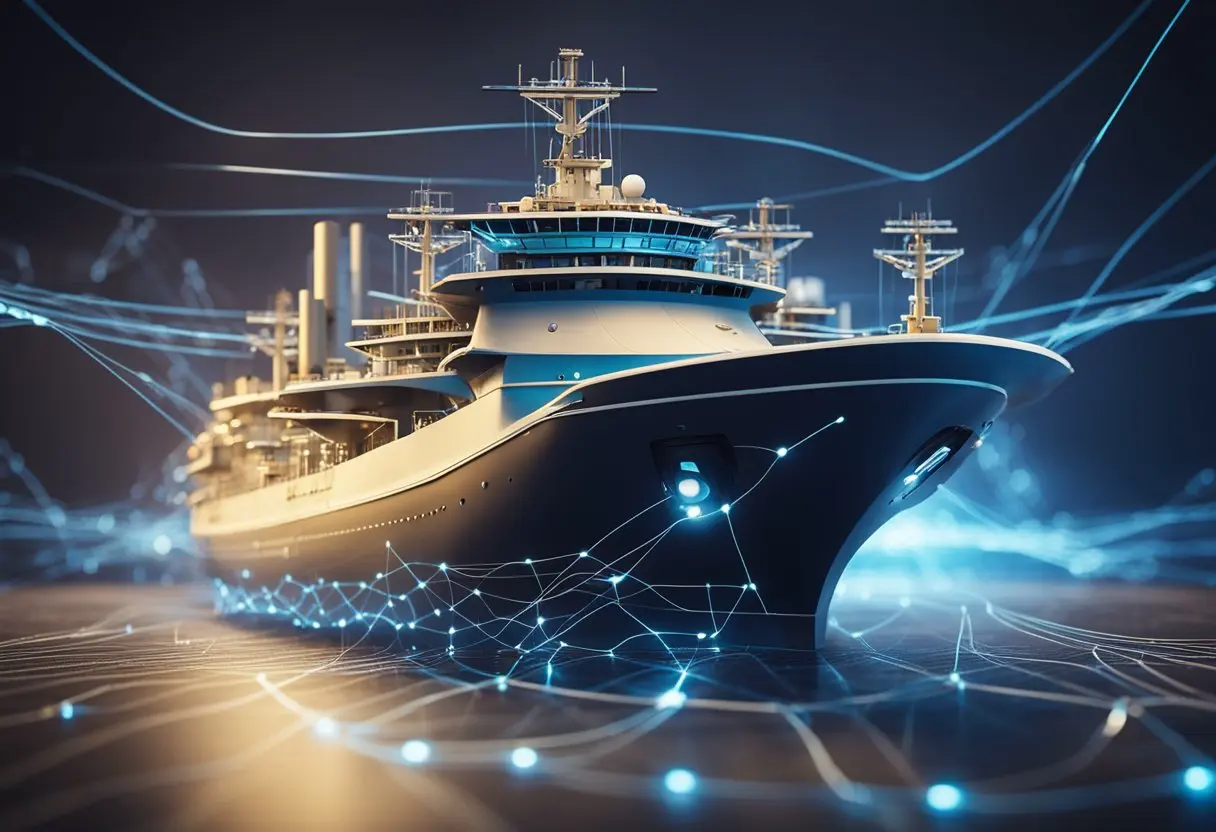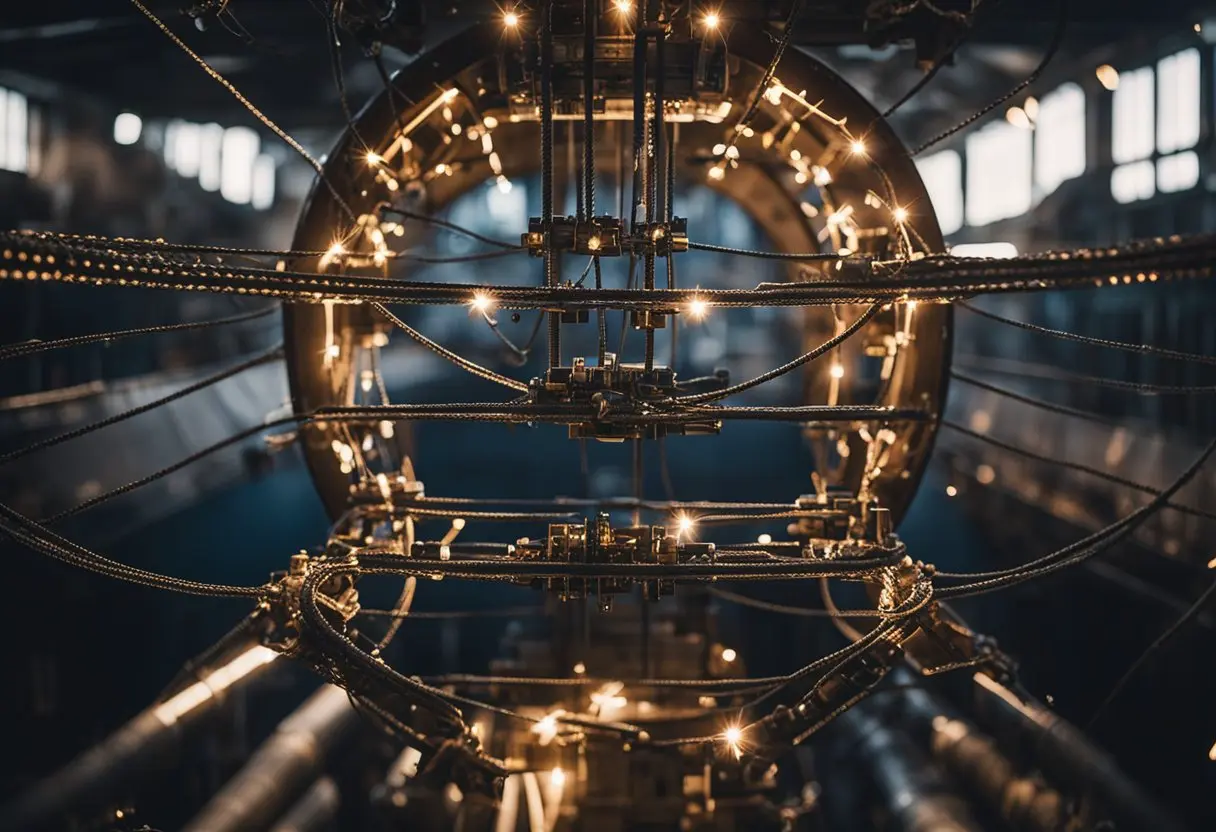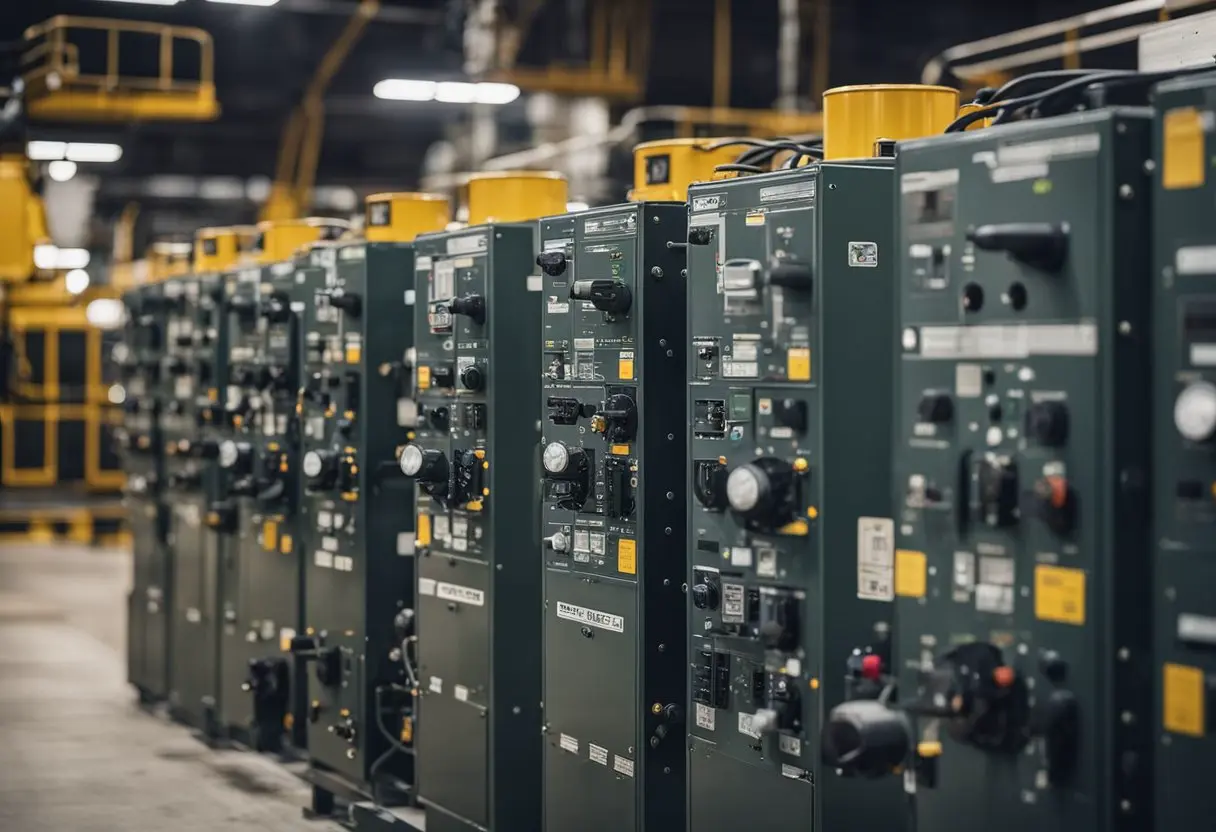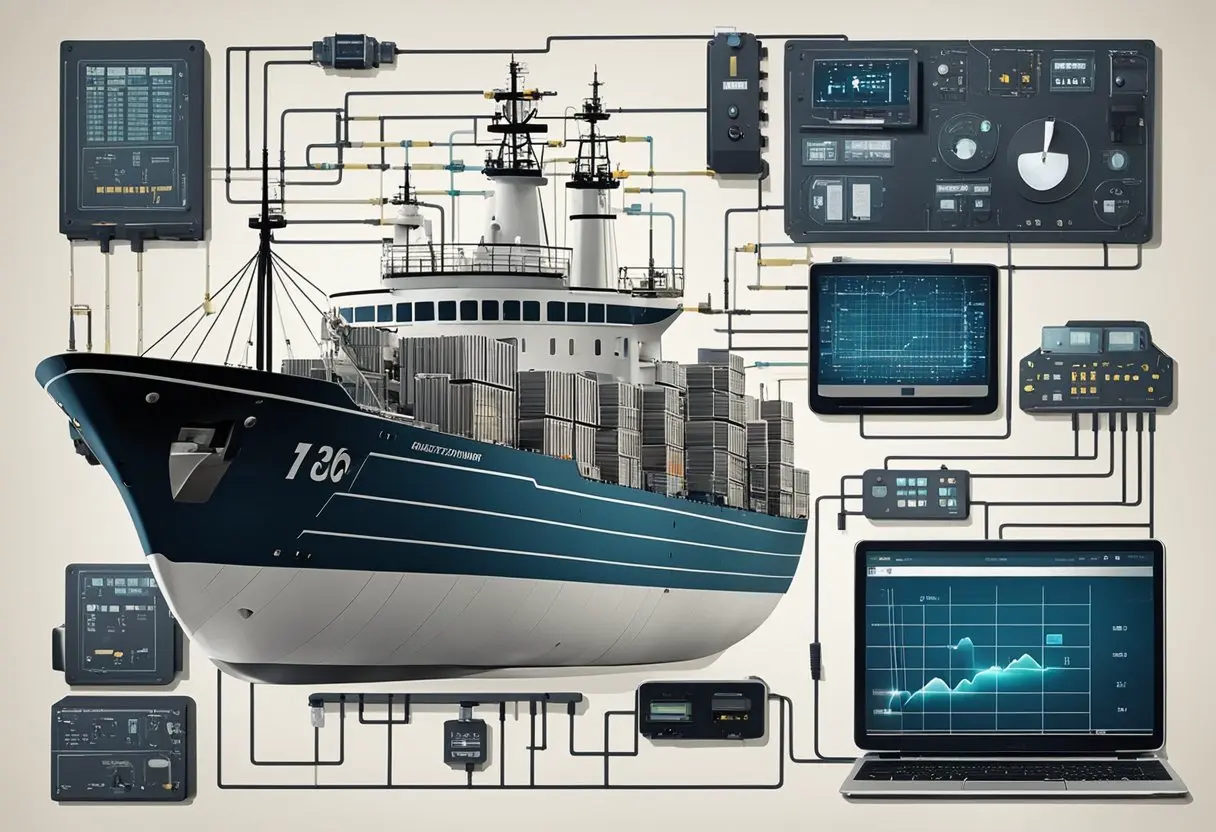Electric current around a ship is a common phenomenon that has puzzled many people. Many have often wondered why ships have electric currents around them. The truth is that ships have electric currents around them due to various reasons. These reasons range from the ship’s movement through water to the ship’s electrical systems.
One of the main reasons for electric current around a ship is the ship’s movement through water. When a ship moves through the water, it creates a magnetic field around it. This magnetic field induces an electric field around the ship, which can be measured using an instrument called a voltmeter. The electric field around the ship is caused by the movement of charged particles in the water, which are induced by the ship’s magnetic field.
Another reason for electric current around a ship is the ship’s electrical systems. Cargo Ships have electrical systems that generate and distribute electrical power throughout the ship. These electrical systems produce electric fields around the ship, which can be measured using a voltmeter. The electric fields around the ship are caused by the flow of electrical current through the ship’s electrical systems.
Fundamentals of Electromagnetism

Magnetic Fields and Moving Charges
Moving charges create magnetic fields. When electric charges move through a wire, they create an electric current. Because electric currents are made up of moving charges, they create magnetic fields. An electromagnet is a coil of wires that becomes a magnet when an electric current runs through it.
The strength of the magnetic field depends on the amount of current flowing through the wire. The direction of the magnetic field depends on the direction of the current flow. The magnetic field is strongest around the wire and decreases as the distance from the wire increases.
Interaction of Saltwater with Magnetic Fields
Saltwater is a good conductor of electricity. When a ship moves through the saltwater, it creates an electric current in the water around it. The movement of the ship through the water creates a magnetic field around the ship. The electric current in the water interacts with the magnetic field around the ship, creating a circular flow of electric current around the ship.
This circular flow of electric current creates a magnetic field around the ship, which in turn creates an electric field. This electric field can be used to protect the ship from corrosion. This process is known as Impressed Current Cathodic Protection (ICCP).
In summary, the movement of a ship through saltwater creates an electric current in the water around it, which interacts with the magnetic field around the ship, creating a circular flow of electric current around the ship. This circular flow of electric current creates a magnetic field around the ship, which can be used to protect the ship from corrosion through ICCP.
Ship’s Structure and Electrical Current

Metal Hull Conductivity
The metal hull of a ship plays an important role in the generation and conduction of electrical current. Since most ships are made of metal, they are natural conductors of electricity. As a result, when a ship moves through the water, it creates an electrical field around its hull. This electrical field is caused by the movement of electrons within the metal hull, which generates an electric current. The electrical current created by the metal hull is known as a “stray current.”
Ship Design and Current Generation
The design of a ship can also affect the generation and conduction of electrical current. For example, ships that have a larger surface area and a more complex design are more likely to generate electrical current than ships with a smaller surface area and a simpler design. This is because the larger surface area and more complex design create more opportunities for the movement of electrons within the metal hull.
In addition, ships that use electrical equipment such as generators, motors, and pumps can also generate electrical currents. This is because the electrical equipment creates a magnetic field around it, which can induce an electrical current in nearby conductive materials such as the metal hull of a ship. To prevent this from happening, ships use a technique called “Impressed Current Cathodic Protection (ICCP)” to keep their surrounding water electrified.
Overall, the metal hull of a ship and its design can play a significant role in the generation and conduction of electrical current. By understanding these factors, ship designers and operators can take steps to prevent the harmful effects of electrical current on the ship’s equipment and the environment.
Sources of Electric Current around Ships

Ship’s Propulsion System
The propulsion system of a ship is one of the main sources of electric current around it. The ship’s engines generate electricity to power the ship’s systems, including the propulsion system. Most modern ships use diesel-electric propulsion systems, which generate electricity through the combustion of diesel fuel. The electricity is then used to power electric motors that turn the ship’s propellers.
Galvanic Corrosion and Cathodic Protection
Another source of electric current around a ship is galvanic corrosion. When two different metals come into contact with each other in seawater, a small electric current is generated. This electric current can cause one of the metals to corrode faster than it would otherwise. To prevent this, ships use a process called cathodic protection. This involves attaching a sacrificial anode to the ship’s hull. The anode is made of a metal that is more reactive than the ship’s hull, so it corrodes instead of the ship’s hull. This process creates a small electric current that helps to protect the ship’s hull from corrosion.
In addition to cathodic protection, ships also use impressed current cathodic protection (ICCP) systems. These systems use an external power source to generate a protective electric current around the ship’s hull. ICCP systems are more effective than sacrificial anodes because they can be adjusted to provide the exact amount of protection needed.
Overall, the sources of electric current around a ship include the ship’s propulsion system and galvanic corrosion. By using cathodic protection and ICCP systems, ships can protect their hulls from corrosion and ensure their safety and longevity on the open seas.
Effects of Electric Current on Marine Environment
Influence on Marine Life
The electric current around a ship can have an impact on marine life. According to a study, electric fields generated by the ship’s electrical systems can affect the behavior of certain marine animals, such as sharks and rays. These animals have specialized electroreceptor organs that help them detect electric fields in the water, and the ship’s electrical systems can interfere with their ability to navigate and find food.
However, the impact of electric fields on marine life is still not fully understood. Some studies have suggested that electric fields can also positively affect marine life by attracting certain species of fish and other organisms to the area around the ship.
Corrosion Impact on Ship’s Hull
Another effect of electric current around a ship is corrosion. The ship’s electrical systems can generate a current that flows through the water and the ship’s hull, which can cause the metal to corrode more quickly than it would otherwise. This is known as galvanic corrosion, and it can be a significant problem for ships that spend a lot of time in the water.
To mitigate the impact of galvanic corrosion, ships use a process called Impressed Current Cathodic Protection (ICCP) as explained in this YouTube video. ICCP is a method of applying an electrical current to the ship’s hull to counteract the natural current that flows through the water. This helps to prevent corrosion and extend the life of the ship.
In conclusion, the electric current around a ship can have both positive and negative effects on the marine environment. While it can interfere with the behavior of certain marine animals, it can also attract others. Additionally, the ship’s electrical systems can cause corrosion on the hull, but this can be mitigated through the use of ICCP.
Detection and Measurement of Electric Current

Instruments and Techniques
Detecting and measuring electric current around a ship is a crucial task to ensure the safety and functionality of the ship’s electrical systems. Various instruments and techniques are used to measure the electric current around a ship. One of the most commonly used instruments is the clamp meter, which measures the magnetic field generated by the electric current. Other instruments include the Hall effect sensor, which measures the magnetic field perpendicular to the electric current, and the Rogowski coil, which measures the rate of change of the electric current.
Data Interpretation and Analysis
Once the electric current is measured, the data must be interpreted and analyzed to ensure that the ship’s electrical systems are functioning properly. The data can be analyzed using various techniques, including spectral analysis, time-domain analysis, and statistical analysis. Spectral analysis involves breaking down the electric current into its frequency components, while time-domain analysis involves analyzing the electric current over time. Statistical analysis involves analyzing the electric current using statistical methods to identify trends and patterns.
The interpretation and analysis of electric current data require a high level of expertise and knowledge. To ensure accurate results, it is important to use reliable instruments and techniques and to follow established procedures and protocols. The data collected can be used to identify potential problems with the ship’s electrical systems and to develop strategies for improving the efficiency and safety of these systems.
Mitigation Strategies
Electric current around a ship can cause corrosion and damage to the hull and other components. To mitigate this issue, several strategies can be employed. Two common strategies are insulation and protective coatings, and active cathodic protection systems.
Insulation and Protective Coatings
Insulation and protective coatings are used to prevent electric current from coming into contact with the hull and other components. This can be achieved by applying coatings to the hull that are resistant to electric current. Additionally, insulating materials can be used to create a barrier between the hull and the water.
A popular coating material used for this purpose is epoxy. Epoxy coatings are highly resistant to electric current and can provide a long-lasting protective layer. Other materials that can be used for insulation include rubber, plastic, and fiberglass.
Active Cathodic Protection Systems
Active cathodic protection systems are used to protect the hull and other components from corrosion caused by electric current. These systems work by creating an electric current that flows from an anode to the hull. The anode is made of a material that corrodes more easily than the hull, so the anode corrodes instead of the hull.
There are two types of active cathodic protection systems: impressed current cathodic protection (ICCP) and sacrificial anode cathodic protection (SACP). ICCP systems use an external power source to create the electric current, while SACP systems use sacrificial anodes that corrode over time.
ICCP systems are more expensive to install and maintain than SACP systems, but they are more effective at preventing corrosion. SACP systems are less expensive, but they require regular replacement of the sacrificial anodes.
In conclusion, insulation protective coatings, and active cathodic protection systems are two effective strategies for mitigating the effects of electric current around a ship. By employing these strategies, shipowners can reduce the risk of corrosion and damage to their vessels.
FAQs About Electric Current around a Ship
What factors contribute to the presence of electrical currents in water near boats?
Electrical currents can be present in water near boats due to various factors. One of the primary factors is the presence of electrical systems on the boat itself, which can create stray electrical currents that leak into the water. Additionally, electrical currents can be present in the water due to natural phenomena such as lightning strikes or changes in water temperature and salinity.
How can electricity leak into water from a vessel, creating a hazardous environment?
Electricity can leak into water from a vessel in several ways, including through faulty wiring or improperly grounded electrical systems. When electricity enters the water, it can create a hazardous environment for swimmers and other individuals in the water, as the electrical current can cause muscle paralysis and even death.
What is electric shock drowning and what are the mechanisms behind it?
Electric shock drowning is a phenomenon that occurs when an individual is exposed to an electrical current in water, leading to muscle paralysis and drowning. The mechanisms behind electric shock drowning involve the electrical current disrupting the normal functioning of the muscles responsible for respiration, leading to suffocation and drowning.
What safety measures can prevent electrical currents from forming around ships?
Several safety measures can prevent electrical currents from forming around ships, including properly grounding all electrical systems on the vessel, regularly inspecting and maintaining all electrical systems, and ensuring that all electrical equipment is installed by qualified professionals.
How is the detection of stray electrical currents around boats typically performed?
The detection of stray electrical currents around boats is typically performed using specialized equipment such as ground fault circuit interrupters (GFCIs) and stray voltage detectors. These devices can detect even small amounts of electrical current in the water, allowing boat owners and operators to take corrective action before a hazardous situation arises.
Related Posts:
